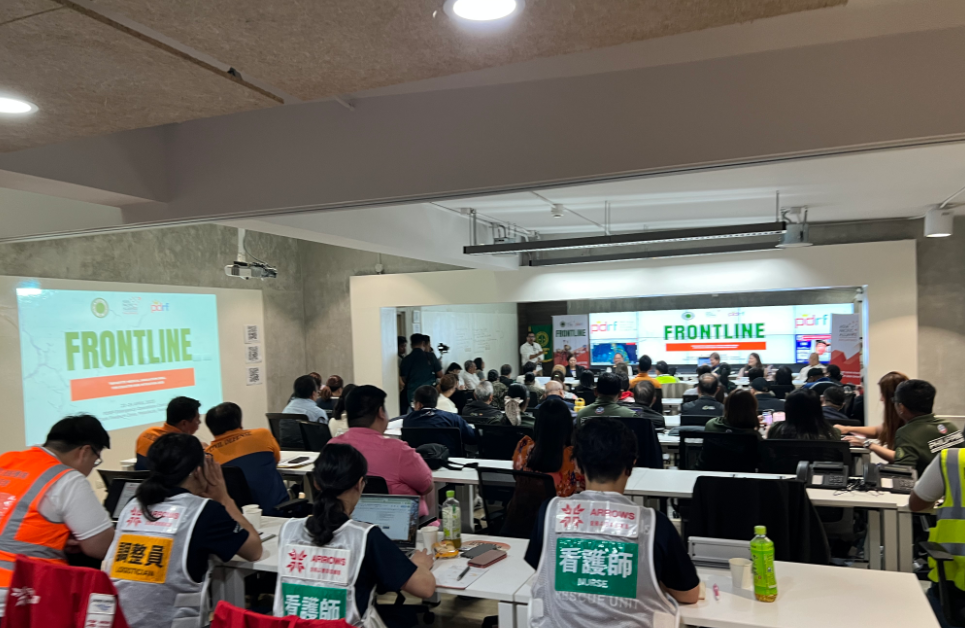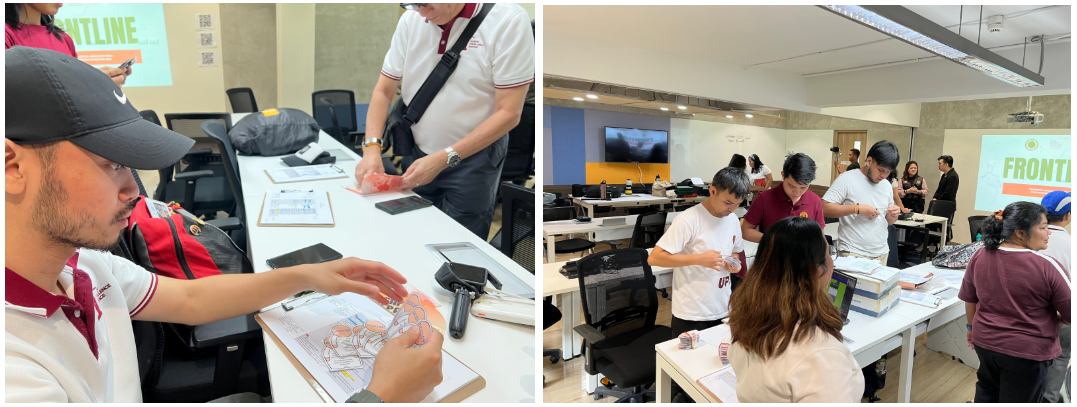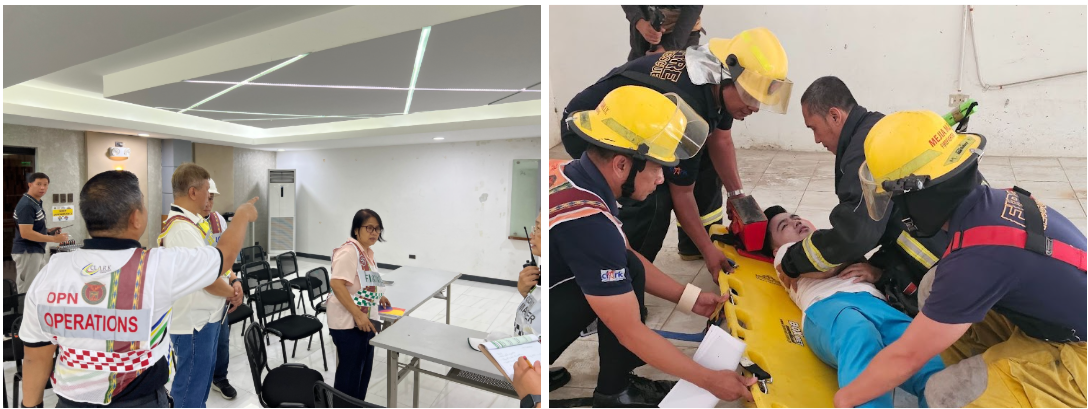On April 23 and 24, 2025, the UP Resilience Institute (UPRI), along with the UP Manila DRRM-H office, travelled to participate in the Tripartite Medical Simulation Drill at the PDRF Emergency Operations Center in Clark, Pampanga. Representing UPRI were Institution Building (IB) Director Carlos Primero Gundran, IB Chief Science Research Specialist Jose Abraham Ongkiko, members from the different divisions. As indicated by the event’s title, this activity was organized by three organizations; Philippine Disaster Resilience Foundation (PDRF), Asia-Pacific Alliance for Disaster Management Philippines (A-PAD PH), and the Philippine Medical Association (PMA). The main purpose of this activity was to develop the interoperability capabilities of the various medical emergency response stakeholders when tackling a Mass Casualty Incident. Over 100 participants from both the public and private sector joined in this activity.

Image 1: An introduction and briefing is provided to the various invited organizations
The two-day Tripartite simulation began with an introductory session where an overview of the event was presented and the participating organizations were formally introduced. On this first day, the various invited organizations were provided an overview of the standards utilized in emergency response. The UPRI and UP Manila DRRM-H were tasked with preparing materials for both the tabletop exercise and the Mass Casualty Incident (MCI) simulation scheduled for the following day. The first day’s tabletop exercise simulated a 7.4 magnitude earthquake, with representatives from the Clark Development Corporation and other local stakeholders participating. This session emphasized the application of the Incident Command System (ICS), identifying roles such as the Incident Commander and other functional positions critical in a real emergency response.

Image 2: Representatives from UPRI and UP Manila DRRM-H prepare the props required for the first day activity
On the second day, the full-scale simulation commenced. UPRI and UP Manila DRRM-H representatives positioned themselves strategically at key observation points such as the Incident Command Post and simulated Hot Zone in preparation of the incoming Emergency Medical Services (EMS) teams. Their role was to observe and evaluate the performance of the simulation’s participants, including the ICS team and EMS responders, as well as the simulation actors. A collective debriefing followed, which included feedback from all parties involved—participants, actors, and observers. UPRI and UP Manila DRRM-H also conducted an internal debrief to summarize findings and develop recommendations based on observed issues in operational flow, communication, and coordination during the drill.


Image 3: Clockwise from left to right: (1) The Incident Command Post members initial formation, (2) The fire rescue team carrying out victim-actors out of the Hot Zone, (3) the triaging being conducted at the PEMAT Advanced Medical Post (AMP), (4) the Peace Winds international team at their dedicated tent in the AMP
Key observations revealed both strengths and weaknesses in the execution of the simulation. Challenges were noted at the Incident Command Post, such as lack of signage, garbled radio communication, missing ICS roles, and misaligned timeline tracking. In the hot zone, several serious issues were observed: entry before clearance, chaotic triage conditions, mistriage incidents, and improper patient management. Similarly, the Advanced Medical Post experienced logistical issues like blocked access and improper equipment handling. Despite these shortcomings, key praiseworthy highlights were also identified such as the commendable performance of the Medical Operations Chief, Dr. Dobles, with her effective leadership and coordination. Furthermore, the international representatives of the Peace Winds team stood out with their efficiency and organization. These insights revealed both operational gaps and opportunities for system-wide improvement.

Image 4: Philippine Medical Association (PMA) Chairman for Emergency and Disaster Dr. Frederick Francisco providing the final message to the participants, left, and UP Resilience Institute – Institution Building Director providing leading the debriefing of the UPRI and UP Manila DRRM-H observers, right
Moving forward, several recommendations have been proposed to strengthen future disaster response simulations. Structurally, adherence to planned preparations, improved signage, and clearer assignment of ICS roles are essential. There is also a call for institutionalizing preparedness mechanisms, such as dedicated training budgets and increased involvement of both private sector and medical associations. Simulation design should evolve to include strategic-level scenarios, regular tabletop exercises, and media interaction challenges. On the ground, improvements in staging area management, clinical assessment accuracy, equipment condition, and data documentation are necessary. Upholding international standards, particularly those demonstrated by Peacewinds, can elevate the quality of local responses. These simulations are invaluable in revealing gaps and must be consistently refined to develop a more resilient, responsive disaster management system.
